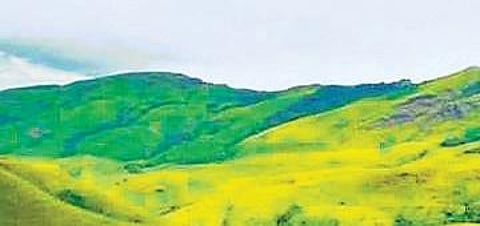

BENGALURU: After much delay, the Centre has finally notified the ESZ (Eco- Sensitive Zone) of Kudremukh National Park. With this, the protected area will have an ESZ area of 316.67 sqkm and an extent ranging from zero to 9.6 km around the boundary of the park. Apart from this, 58 villages and 108 revenue enclosures in the districts of Chikkamagaluru, Dakshina Kannada and Udupi which are included in the ESZ, will need to adhere to rules that prohibit and regulate industrial and commercial activities.
The zero extent of ESZ is in the northern side of the national park as it adjoins the Someshwara Wildlife Sanctuary. Notified on July 2, the 108 revenue enclosures fall in the taluks of Belthangady, Sringeri, Koppa, Mudigere and Karkala taluks and will now form part of the ESZ. The State will propose and formulate the Zonal Master Plan within two years from the date of notification. This plan will regulate development in ESZ and strictly adhere to rules on prohibited and regulated activities. No land use change, no new hotels or resorts or commercial establishments or construction on hill slopes will be permitted.
Welcoming the notification, G Veeresh, honorary wildlife warden, Chikkamagaluru, said, “This is a forest area in the Western Ghats that has slowly rejuvenated in the last 15 years. The ESZ will ensure more protection of its rare flora and fauna.” Located at the tri-junction of three districts, Kudremukh is a unique landscape having low elevation wet evergreen forests and Shola-Grassland Biome in the entire stretch of Western Ghats.
Varying from altitudes of 135 metres to 1,900 metres from the sea level, Kudremukh was saved due to activism and legal fight that ended in 2005 and put a stop to mining by KIOCL company. Apart from the floral wealth of Kudremukh, the faunal value is of critical importance. It is the largest remaining habitat of the single largest population of Lion Tailed Macaques in India and the world. It is also the home of the longest venomous snake in the world, the king cobra, and the Malabar Slender Loris.